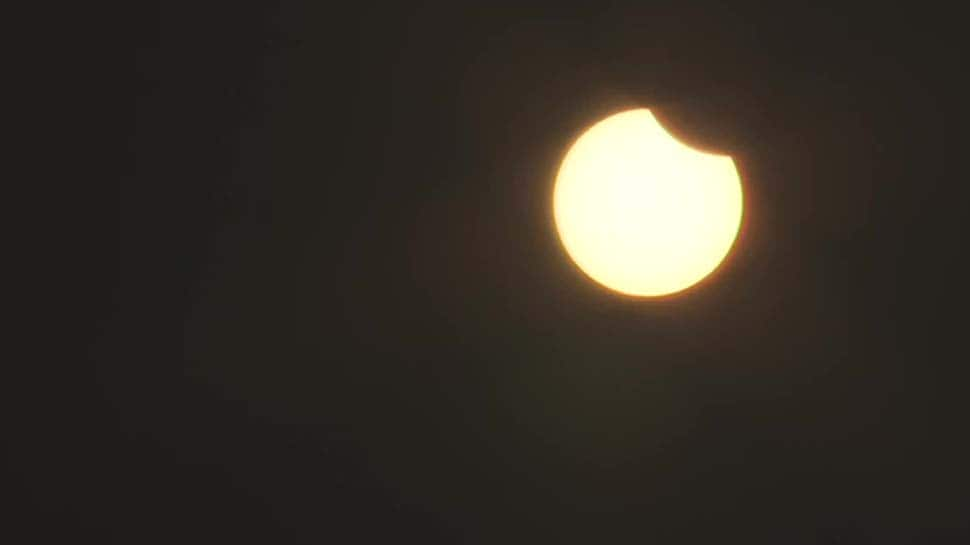As the world gears up for the last Solar eclipse of 2019 on Thursday, people gathered at parks and observation centres in India to view the annular solar spectacle which is visible in several parts of the country.
The partial phase of the eclipse began at 8 am followed by the annular phase which started at 9 am till 12.29 pm. The partial phase will end at 1.36 pm. In India, the obscuration of Sun by the Moon at the time of the greatest phase of the annular eclipse will be nearly 93 per cent.
An annular eclipse occurs when the moon covers the sun`s centre, leaving the sun`s outer edges visible to form a `ring of fire` or annulus around the moon. The eclipse will be visible in Saudi Arabia, Oman, Southern India, and parts of Indonesia.
Here are the partial eclipse timings in different parts of India:
Allahabad: 8.19 am
Amritsar: 8.18 am
Bangalore: 8.06 am
Bhubaneswar: 8.19 am
Varanasi: 8.20 am
Delhi: 8.17 am
Mumbai: 8.04 am
Kolkata: 8.27 am
Guwahati: 8.39 am
Chennai: 8.08 am
Ranchi: 8.22 am
Cochin: 8.06 am
Gaya: 8.23 am
Haridwar: 8.21 am
Hyderabad: 8.08 am
Jalandhar: 8.20 am
Chandigarh: 8.21 am
Jammu: 8.20 am
Lucknow: 8.19 am
Mangalore: 8.04 am
Patna: 8.24 am
Puri: 8.19 am
Pune: 8.04 am
Shillong: 8.39 am
Ujjain: 8.09 am
As per a release by the Ministry of Earth Sciences issued last week, the annular phase will be visible in the morning after sunrise from some places within a narrow corridor of southern part of the country (parts of Karnataka, Kerala and Tamil Nadu) and it will be seen as partial solar eclipse from the rest part of the country.
The ministry cautioned that the eclipsed sun should not be viewed with the naked eye, even for a very short time. As it could cause permanent damage to the eyes leading to blindness even when the moon covers most portion of the Sun. A proper filter like aluminized mylar, black polymer, welding glass of shade number 14 or a projection of Sun`s image on a whiteboard by a telescope are the two preferred methods, the release said.
The next solar eclipse visible from India, also an annular solar eclipse, will be on June 21, 2020.
(With inputs from ANI)
















